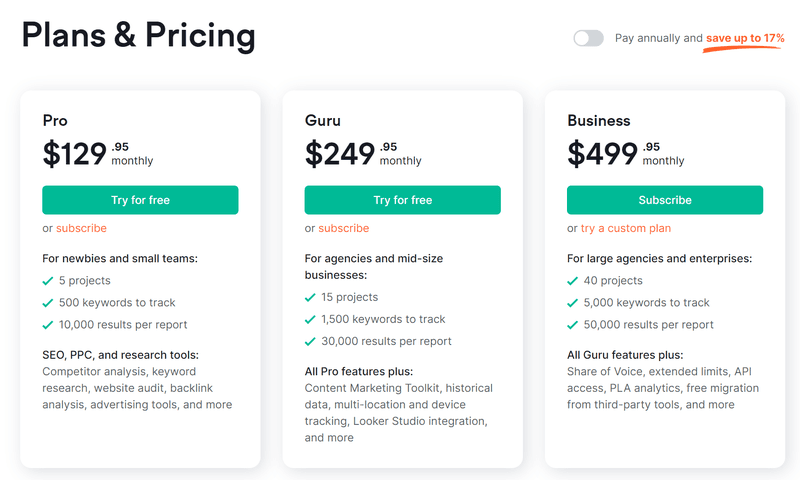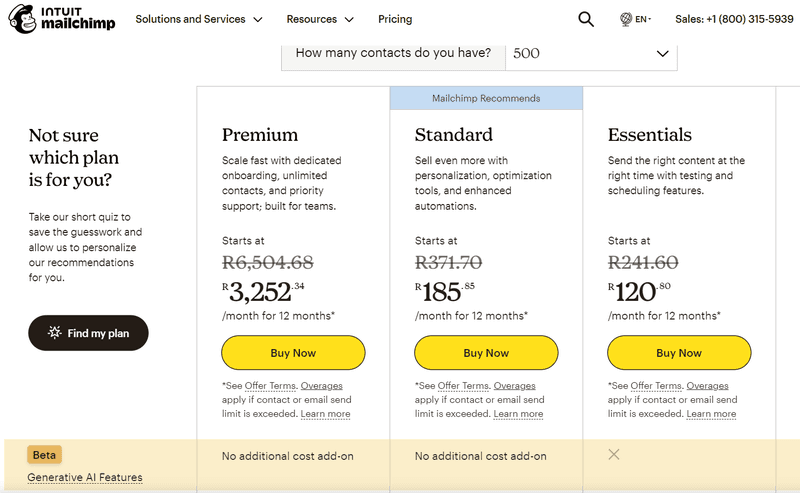What Is A Subscription Plan?
Nov 6, 2023
Your target customers will rarely be a homogenous mass that you can target with one subscription plan. Learn what a subscription plan is and why offering more than one option is good for business.
The subscription business model has become a popular way to quickly deliver products and services your customers love and use frequently. It is also a great way to generate recurring revenue and build customer loyalty.
But pricing your subscription offering as one all-inclusive package robs you of an opportunity to maximise revenue and optimise the subscription experience for your customers.
You are much better off creating multiple subscription plans and selling those individually to your customers. So, this article considers the case for breaking up your subscription offering into plans, tiers, or modules.
What is a subscription plan?
A subscription plan is an agreement between a subscription company and its subscribers that stipulates what features, services, and benefits they will enjoy when they sign up and pay the stipulated price or fee.
It is typically an option among several that lets you productise your subscription offering and appeal it to different segments of your target market.
A subscription plan is akin to a contract between you and your customers that sets out what they will get, for how long, how frequently, and in what quality or quantity.
The customer agrees to pay a certain amount regularly, usually monthly or annually, in exchange for access to or supply of a product or service.
Subscription plans are often used for streaming services, software, and online memberships. Depending on the type of subscription business, they let customers choose:
The features they want and the price they can afford (SaaS).
Delivery frequency - how often they want to receive a delivery (subscription box).
The level of viewing or image quality (stock photography and video streaming).
Why is it important to offer different subscription plans for your business?
Subscription businesses earn money by charging a recurring fee for accessing certain services and content. While the business model guarantees recurring revenue, to optimise pricing and maximise revenue, it must recognise that customer needs and budgets differ.
If it’s a SaaS product, you will have customers whose needs are so light that they only need the product’s basic features. You will drive them away to a competitor if you force them into an expensive plan mainly comprising premium features they don’t need.
So, you will attract and satisfy a broader clientele if you break up your subscription offering into levels with different features and prices. This gives customers the convenience of choosing a subscription plan that suits them.
Your subscription plans form the heart of your subscription pricing strategy and will influence how well your business will fare. So, it’s critical to take good care when creating them:
How to design subscription pricing plans that drive conversions.

Your subscription plans must be a product of careful analysis of your revenue goals and the needs and demands of your target customers.
Good subscription plans break down your subscription offerings into easy-to-digest options. They make it easy for customers to gauge how much value they will get from their investment.
If, for example, you have one subscription that bundles a long list of options, including a few that customers will rarely ever use, customers may feel like they are overpaying. Simply because they are ‘paying’ for features they don’t need.
It will be more beneficial to create another tier/plan and add these premium or rarely used features. An added benefit is that you can market this as a premium plan and charge a suitably higher price.
Here are other tips on how to your subscription plan design:
1. Don’t create too many plans.
Creating more than one subscription plan gives your customers several choices, which increases your customers’ perception of self-determination. It creates in them feelings of autonomy and control, which helps to position your subscription product in their minds.
But you should be careful not to give your customers too many options as this creates decision fatigue. It forces them to review all the plans you are asking them to choose from, adding to the many other decisions they have to make during the course of their day.
When they have to consider so many variables before deciding, the problem is, instead of signing up right away, they put off the decision for another day. They may never return, maybe because a competitor has intercepted them or more pressing issues have arisen.

The best SaaS businesses limit the number of subscription plans they offer to just three. You will notice that many will also highlight the middle plan as their most popular.
That central positioning gives that specific plan more prominence on the plans and pricing page, which drives signups for their likely most profitable subscription plan.
2. Keep the pricing simple.
Customers love it when your pricing is simple. This means listing the different features and benefits under each subscription and one price. Of course, you can emphasise the savings of subscribing to a yearly plan versus a monthly plan, as Mailchimp shows above.
Adding fees for additional features that subscribers can opt into may confuse them and complicate their decision-making, adding friction points that lower your conversions. A better approach is to add those additional features and benefits onto a higher subscription plan.
Subscription plans with complex pricing make it harder to convince customers that your offering offers more value than the price they are paying. And when that happens, building customers’ trust becomes a challenge.
More complex subscription plans with additional fees also add an administrative overhead for your business. You will have more metrics to track and decisions to make, separating what’s moving the needle from what isn’t.
3. Target a precise audience.
Your subscription plans must be well-defined and optimised to meet the needs of the market segment you are targeting. In other words, your subscription plans must reflect the different, carefully segmented sections of a larger market.
When you decide to add a tier or plan, the hypotheses you are working from must be data-driven. This data should either be from market research or collected from your existing customers.
Working from the insights drawn from that data, your new subscription plan could aim to:
Target a higher-value subscriber,
Leverage an additional premium feature you just developed, or
Retain customers who want a lighter plan they can afford.
Remember that the goal of creating several subscription plans is to target your subscription offering to specific customer needs. When customers find a plan that closely matches their needs, it will feel like it was created specifically for them.
There are many benefits to offering different subscription plans for your product. For customers, it helps align price to value and cultivate a lasting relationship based on trust.
Optimise the subscription experience by offering subscription plan options.
Offering several subscription plans expands your bandwidth to maximise revenue. For customers, it creates a better subscription experience by allowing them to choose a bundle of features and benefits that meets their unique needs.
Overall, subscription billing offers a convenient way for customers to access the products and services they want without worrying about making individual payments each time. They also prefer it as a cost-effective way to get access to a variety of products and services.
Take the pain out of creating subscription plans and monetising your subscription offering with Intasend’s subscription and automatic billing software. Sign up today to get started or book a demo to test the software.

